 W
WA Lagerstätte is a sedimentary deposit that exhibits extraordinary fossils with exceptional preservation—sometimes including preserved soft tissues. These formations may have resulted from carcass burial in an anoxic environment with minimal bacteria, thus delaying the decomposition of both gross and fine biological features until long after a durable impression was created in the surrounding matrix. Lagerstätten span geological time from the Neoproterozoic era to the present. Worldwide, some of the best examples of near-perfect fossilization are the Cambrian Maotianshan shales and Burgess Shale, the Devonian Hunsrück Slates and Gogo Formation, the Carboniferous Mazon Creek, the Jurassic Solnhofen limestone, the Cretaceous Santana, Yixian formations, the Eocene Green River Formation, and the Miocene Foulden Maar.
 W
WAchiri is a location in the La Paz Department in Bolivia. In 2010 it had an estimated population of 817.
 W
WThe Alum Shale Formation is a formation of black shale of Middle Cambrian to Tremadocian in age found predominantly in southern Scandinavia. It is shale or clay slate containing pyrite. Decomposition of pyrite by weathering forms sulfuric acid, which acts on potash and alumina constituents to form alum, which often occurs as efflorescences on the rock outcrop.
 W
WThe Ash Hollow Formation of the Ogallala Group is a geological formation found in Nebraska and South Dakota. It preserves fossils dating back to the Neogene period. It was named after Ash Hollow, Nebraska and can be seen in Ash Hollow State Historical Park.
 W
WThe Ashfall Fossil Beds of Antelope County in northeastern Nebraska are rare fossil sites of the type called lagerstätten that, due to extraordinary local conditions, capture a moment in time ecological "snapshot" in a range of well-preserved fossilized organisms. Ash from a Yellowstone hotspot eruption 10-12 million years ago created these fossilized bone beds.
 W
WThe Balfour Formation is a geological formation that is found in the Beaufort Group, a major geological group that forms part of the greater Karoo Supergroup in South Africa. The Balfour Formation is the uppermost formation of the Adelaide Subgroup which contains all the Late Permian-aged biozones of the Beaufort Group. Outcrops and exposures of the Balfour Formation are found from east of 24 degrees in the highest mountainous escarpments between Beaufort West and Fraserburg, but most notably in the Winterberg and Sneeuberg mountain ranges near Cradock, the Baviaanskloof river valley, Graaff-Reniet and Nieu Bethesda in the Eastern Cape, and in the southern Free State province.
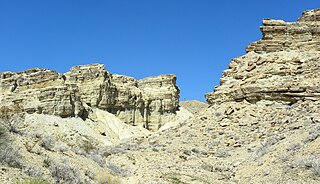 W
WThe Barstow Formation is a series of limestones, conglomerates, sandstones, siltstones and shales exposed in the Mojave Desert near Barstow in San Bernardino County, California.
 W
WThe Bear Gulch Limestone in Montana is a fossiliferous lagerstätte, a limestone layer laid down in the Bashkirian Stage of the early Pennsylvanian epoch of the Carboniferous period, about 318 mya.
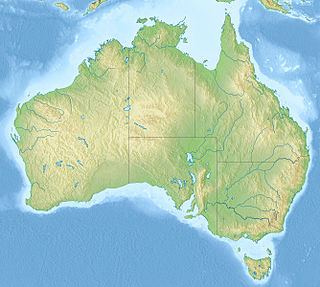 W
WBitter Springs Group is a Precambrian fossil locality in Australia, which preserves microorganisms in silica. Its preservational mode ceased in the late Precambrian with the advent of silicifying organisms.
 W
WThe Brandon Bridge Formation is a geologic formation in Wisconsin. It preserves fossils dating back to the Silurian period, including those of graptolites, conodonts and Parioscorpio.
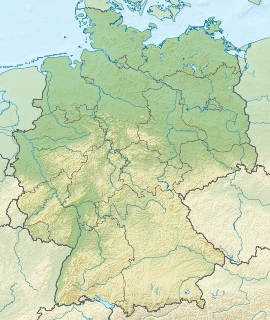 W
WThe Bückeberg Formation is a geologic formation and Lagerstätte in Germany. It preserves fossils dating back to the Berriasian of the Cretaceous period. The Bückeberg Formation has previously been considered to constitute the "German Wealden" in reference to its similarity to the Wealden Group in the United Kingdom. More recently it has been considered a group, containing the Isterberg and Deister Formations. The plesiosaur Brancasaurus, and an indeterminate ankylosaur referred to Hylaeosaurus are known from the formation.
 W
WSituated on the Belubula River, Canowindra is a historic township and largest population centre in Cabonne Shire and is located between Orange and Cowra in the central west of New South Wales, Australia. The curving main street, Gaskill Street, is partly an urban conservation area. At the 2016 census, Canowindra and the surrounding area had a population of 2,258.
 W
WThe Carpinteria Tar Pits are a series of natural asphalt lakes situated in the southern part of Santa Barbara County in southern California.
 W
WChristian Malford is a village and civil parish in the county of Wiltshire, England. The village lies about 4 1⁄2 miles (7 km) northeast of the town of Chippenham. The Bristol Avon forms most of the northern and eastern boundaries of the parish. The hamlets of Thornend and Upper Town lie within the parish.
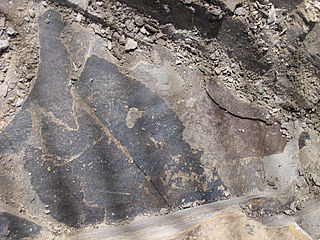 W
WThe Clarkia fossil beds is a Miocene lagerstätte near Clarkia, Idaho.
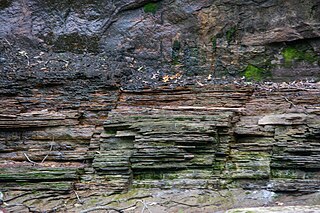 W
WThe Cleveland Shale, also referred to as the Cleveland Member, is a shale geologic formation in the eastern United States.
 W
WThe Douglas Lake Member is a geologic unit of member rank of the Lenoir Limestone that overlies the Mascot Dolomite and underlies typical nodular member of the Lenoir Limestone in Douglas Lake, Tennessee, region. It fills depressions that are part of a regional unconformity at the base of Middle Ordovician strata, locally the Lenoir Limestone, that separates them from the underlying Lower Ordovician strata, locally the Knox Group.
 W
WThe Doushantuo Formation is a fossil Lagerstätte in Weng'an County, Guizhou Province, China that is notable for being one of the oldest beds to contain minutely preserved microfossils, phosphatic fossils that are so characteristic they have given their name to "Doushantuo type preservation". The formation is of particular interest because a part of it appears to cover the boundary between the enigmatic organisms of the Ediacaran geological period and the more familiar fauna of the Cambrian explosion where lifeforms recognizable as ancestors of later and recent lifeforms first emerged. Taken as a whole, the Doushantuo Formation ranges from about 635 Ma at its base to about 551 Ma at its top, predating by perhaps five Ma the earliest of the 'classical' Ediacaran faunas from Mistaken Point on the Avalon peninsula of Newfoundland, and recording conditions up to a good forty to fifty million years before the Cambrian explosion.
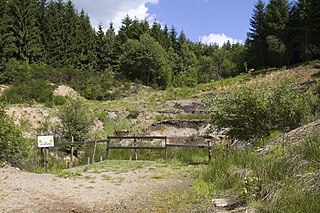 W
WThe Eckfelder Maar is a former volcanic lake, that was formed during the Middle Eocene around 44.3 million years ago and is thus the oldest known maar. It lies in the southwestern Eifel mountains near Manderscheid in Germany. It is also an important fossil site that contains numerous fossil remains of fauna and flora, some of them complete. It has been continuously scientifically researched since 1987. The large number of finds - to date 25,000 fossils have been found - have enabled a very detailed reconstruction of the landscape. This maar, together with the Grube Messel and the Geiseltal valley, is one of the foremost palaeontological sites for this geological epoch in Central Europe and worldwide.
 W
WFoulden Maar, a fossil site near Middlemarch in Otago, New Zealand, formed in a volcanic eruption 23 million years ago. The resulting crater lake filled with diatomite, composed of layers of silica-shelled algae (diatoms) and exceptional fossils of plants, fishes, spiders and insects from the surrounding sub-tropical Miocene forest. As the only known maar of its kind in the Southern Hemisphere, it is one of New Zealand's pre-eminent fossil sites. A 2018 proposal to mine Foulden Maar for livestock-food additive has attracted significant public opposition.
 W
WFoulden Maar, a fossil site near Middlemarch in Otago, New Zealand, formed in a volcanic eruption 23 million years ago. The resulting crater lake filled with diatomite, composed of layers of silica-shelled algae (diatoms) and exceptional fossils of plants, fishes, spiders and insects from the surrounding sub-tropical Miocene forest. As the only known maar of its kind in the Southern Hemisphere, it is one of New Zealand's pre-eminent fossil sites. A 2018 proposal to mine Foulden Maar for livestock-food additive has attracted significant public opposition.
 W
WThe Mazon Creek fossil beds are a conservation lagerstätte found near Morris, in Grundy County, Illinois. The fossils are preserved in ironstone concretions, formed approximately 309 million years ago in the mid-Pennsylvanian epoch of the Carboniferous period. These concretions frequently preserve both hard and soft tissues of animal and plant materials, as well as many soft-bodied organisms that do not normally fossilize. The quality, quantity and diversity of fossils in the area, known since the mid-nineteenth century, make the Mazon Creek lagerstätte important to paleontologists, in attempting to reconstruct the paleoecology of the sites. The locality was declared a National Historic Landmark in 1997.
 W
WThe Gogo Formation in the Kimberley region of Western Australia is a Lagerstätte that exhibits exceptional preservation of a Devonian reef community. The formation is named after Gogo Station, a cattle station where outcrops appear and fossils are often collected from, as is nearby Fossil Downs Station.
 W
WThe Green River Formation is an Eocene geologic formation that records the sedimentation in a group of intermountain lakes in three basins along the present-day Green River in Colorado, Wyoming, and Utah. The sediments are deposited in very fine layers, a dark layer during the growing season and a light-hue inorganic layer in the dry season. Each pair of layers is called a varve and represents one year. The sediments of the Green River Formation present a continuous record of six million years. The mean thickness of a varve here is 0.18 mm, with a minimum thickness of 0.014 mm and maximum of 9.8 mm.
 W
WThe Hunsrück Slate is a Lower Devonian lithostratigraphic unit, a type of rock strata, in the German regions of the Hunsrück and Taunus. It is a lagerstätte famous for exceptional preservation of a highly diverse fossil fauna assemblage.
 W
WThe Ingersoll Shale is a Late Cretaceous (Santonian) informal geological unit in eastern Alabama. Fourteen theropod feathers assigned to birds and possibly dromaeosaurids have been recovered from the unit.
 W
WThe Joggins Formation is a geologic formation in Nova Scotia. It preserves fossils dating back to the Carboniferous period, including Hylonomus, the earliest known reptile. In addition to fossils, the Joggins Formation was a valuable source of coal from the 17th century until the mid-20th century.
 W
WThe Kaili Formation is a stratigraphic formation which was deposited during the Lower and Middle Cambrian. The formation is approximately 200 metres (660 ft) thick and was named after the city Kaili in the Guizhou province of southwest China.
 W
WThe Karabastau Formation is a geological formation and lagerstätte in Kazakhstan whose strata date to the Middle to Late Jurassic. It is an important locality for insect fossils that has been studied since the early 20th century, alongside the rarer remains of vertebrates, including pterosaurs, salamanders, lizards and crocodiles.
 W
WLa Brea Tar Pits are a group of tar pits around which Hancock Park was formed in urban Los Angeles. Natural asphalt has seeped up from the ground in this area for tens of thousands of years. The tar is often covered with dust, leaves, or water. Over many centuries, the tar preserved the bones of trapped animals. The George C. Page Museum is dedicated to researching the tar pits and displaying specimens from the animals that died there. La Brea Tar Pits is a registered National Natural Landmark. The tar pits were also referenced in a Weezer song of the same name.
 W
WThe late Middle Jurassic lagerstätte at La Voulte-sur-Rhône, in the Ardèche region of southwestern France, offers paleontologists an outstanding view of an undisturbed paleoecosystem that was preserved in fine detail as organisms died at the site and settled to the bottom of a shallow epicontinental sea, with a folded floor that in places exceeded 200 m at this site. The site preserves a marine system of the Lower Callovian stage, a little over 160 mya. The sequence is exposed in a series of quarries at La Boissine, west of the village of La Voulte-sur-Rhône. Iron pyrites in the silty shale are symptoms of an anoxic environment. The site was recognized among French paleontologists from the mid-nineteenth century for its finely detailed fossils.
 W
WThe Laredo Formation is a geologic formation and Lagerstätte in Texas, United States and Nuevo León and Tamaulipas, Mexico. It preserves fossils dating back to the Lutetian stage of the Eocene period. Among many other fossils, the formation has provided invertebrates, vertebrates, leaves, pollen and spores and fossil wood of the brackish water palm Nypa sp.
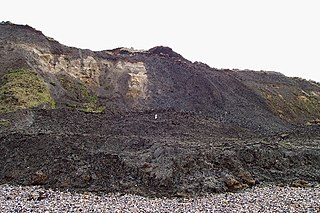 W
WThe London Clay Formation is a marine geological formation of Ypresian age which crops out in the southeast of England. The London Clay is well known for its fossil content. The fossils from the lower Eocene rocks indicate a moderately warm climate, the tropical or subtropical flora. Though sea levels changed during the deposition of the clay, the habitat was generally a lush forest – perhaps like in Indonesia or East Africa today – bordering a warm, shallow ocean.
 W
WThe Mangrullo Formation is an Early Permian (Artinskian) fossiliferous geological formation in northeastern Uruguay. Some authors alternatively group it together with the Paso Aguiar Formation and the Fraile Muerto Formation as the three subdivisions of the Melo Formation, in which case it is referred to as the Mangrullo Member. Like the correlated formations of Irati and Whitehill, it is known for its abundant mesosaur fossils. It also contains the oldest known Konservat-Lagerstätte in South America, as well as the oldest known fossils of amniote embryos.
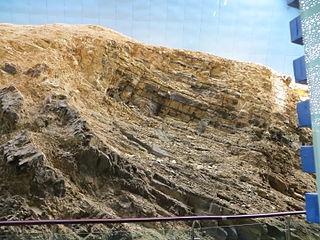 W
WThe Maotianshan Shales are a series of Early Cambrian deposits in the Chiungchussu Formation, famous for their Konservat Lagerstätten, deposits known for the exceptional preservation of fossilized organisms or traces. The Maotianshan Shales form one of some forty Cambrian fossil locations worldwide exhibiting exquisite preservation of rarely preserved, non-mineralized soft tissue, comparable to the fossils of the Burgess Shale. They take their name from Maotianshan Hill in Chengjiang County, Yunnan Province, China.
 W
WThe Mare aux Songes swamp is a lagerstätte located close to the sea in south eastern Mauritius. Many subfossils of recently extinct animals have accumulated in the swamp, which was once a lake, and some of the first subfossil remains of dodos were found there.
 W
WThe Mazon Creek fossil beds are a conservation lagerstätte found near Morris, in Grundy County, Illinois. The fossils are preserved in ironstone concretions, formed approximately 309 million years ago in the mid-Pennsylvanian epoch of the Carboniferous period. These concretions frequently preserve both hard and soft tissues of animal and plant materials, as well as many soft-bodied organisms that do not normally fossilize. The quality, quantity and diversity of fossils in the area, known since the mid-nineteenth century, make the Mazon Creek lagerstätte important to paleontologists, in attempting to reconstruct the paleoecology of the sites. The locality was declared a National Historic Landmark in 1997.
 W
WThe McAbee Fossil Beds is a Heritage Site that protects an Eocene Epoch fossil locality east of Cache Creek, British Columbia, Canada, just north of and visible from Provincial Highway 97 / the Trans-Canada Highway. The McAbee Fossil Beds, comprising 548.23 hectares, were officially designated a Provincial Heritage Site under British Columbia's Heritage Conservation Act on July 19, 2012. The site is part of an old lake bed which was deposited about 52 million years ago and is internationally recognised for the diversity of plant, insect, and fish fossils found there. Similar fossil beds in Eocene lake sediments, also known for their well preserved plant, insect and fish fossils, are found at Driftwood Canyon Provincial Park near Smithers in northern British Columbia, on the Horsefly River near Quesnel in central British Columbia, and at Republic in Washington, United States. The Princeton Chert fossil beds in southern British Columbia are also Eocene, but primarily preserve an aquatic plant community. A recent review of the early Eocene fossil sites from the interior of British Columbia discusses the history of paleobotanical research at McAbee, the Princeton Chert, Driftwood Canyon, and related Eocene fossil sites such as at Republic.
 W
WThe McKittrick Tar Pits are a series of natural asphalt lakes situated in the western part of Kern County in southern California. The pits are the most extensive asphalt lakes in the state.
 W
WThe Messel Pit is a disused quarry near the village of Messel about 35 km (22 mi) southeast of Frankfurt am Main, Germany. Bituminous shale was mined there. Because of its abundance of fossils, it has significant geological and scientific importance. After almost becoming a landfill, strong local resistance eventually stopped these plans and the Messel Pit was declared a UNESCO World Heritage site on 9 December 1995. Significant scientific discoveries are still being made and the site has increasingly become a tourist site as well.
 W
WMonte Bolca is a lagerstätte near Verona, Italy that was one of the first fossil sites with high quality preservation known to Europeans, and is still an important source of fossils from the Eocene.
 W
WThe Mount Cap Formation is a geologic formation exposed in the Mackenzie Mountains, northern Canada. It was deposited in a shallow shelf setting in the late Early Cambrian, and contains an array of Burgess Shale-type microfossils that have been recovered by acid maceration.
 W
WThe Pietraroia Plattenkalk is a Cretaceous geologic formation located in the Italian municipality of Pietraroja, near Benevento, in Campania region. It is of Albian age. Dinosaur remains diagnostic to the genus level are among the fossils that have been recovered from the formation.
 W
WThe Prüm Syncline, Prüm Limestone Basin or Prüm Basin is a landscape unit of the southern Limestone Eifel in Germany, which in turn is part of the Eifel mountain range. The region lies in the German state of Rhineland-Palatinate. The Prüm Limestone Basin has an area of 240 km2 and is the largest of the Eifel limestone basins. Geologically it contains dolomite formed from the fringing reefs or barrier reefs of the Devonian on the edge of the Rheno-Hercynian Basin mixed with rocks of other earth-historical periods. It is named after the largest settlement in the region, the town of Prüm, and the River Prüm, whose right bank running from northeast to southwest marks the western boundary of the basin. In the east the basin extends beyond the village of Büdesheim almost to the Gerolstein Basin and the Hillesheim/Ahrdorf Basin, whose borders in the Upper Bettingen bunter sandstone region are unclear. In the southwest the basin runs from Schönecken with the exposed rock formations of the Schönecker, Switzerland in the direction of Daleiden. The region lies at an average height of 500 to 550 metres above sea level.
 W
WThe Rhynie chert is an Early Devonian sedimentary deposit exhibiting extraordinary fossil detail or completeness. It is exposed near the village of Rhynie, Aberdeenshire, Scotland; a second unit, the Windyfield chert, is located some 700 m away. The Rhynie chert contains exceptionally preserved plant, fungus, lichen and animal material preserved in place by an overlying volcanic deposit. The bulk of the fossil bed consists of primitive plants, along with arthropods, lichens, algae and fungi.
 W
WRiversleigh World Heritage Area is Australia's most famous fossil location, recognised for the series of well preserved fossils deposited from the Late Oligocene to more recent geological periods. The fossiliferous limestone system is located near the Gregory River in the north-west of Queensland, an environment that was once a very wet rainforest that became more arid as the Gondwanan land masses separated and the Australian continent moved north. The approximately 100 square kilometres (39 sq mi) area has fossil remains of ancient mammals, birds, and reptiles of the Oligocene and Miocene ages, many of which were discovered and are only known from the Riversleigh area; the species that have occurred there are known as the Riversleigh fauna.
 W
WSan Cassiano Formation (Anisian-Carnian) is a geologic formation located on the Southern Alps in the Dolomites. These Triassic dolomites are considered to be a classic example of ancient carbonate platforms. As the allochthonous elements in the Shale strata show a good preservation, fossils and microbialites contained in these elements are useful in detailed geochemical analyses.
 W
WThe Sannine Formation also called the Sannine Limestone is a Cretaceous geologic formation in Lebanon.
 W
WSirius Passet is a Cambrian Lagerstätte in Greenland. The Sirius Passet Lagerstätte was named after the Sirius sledge patrol that operates in North Greenland. It comprises six places in Nansen Land, on the east shore of J.P. Koch Fjord in the far north of Greenland. It was discovered in 1984 by A. Higgins of the Geological Survey of Greenland. A preliminary account was published by Simon Conway Morris and others in 1987 and expeditions led by J. S. Peel and Conway Morris have returned to the site several times between 1989 and the present. A field collection of perhaps 10,000 fossil specimens has been amassed. It is a part of the Buen Formation.
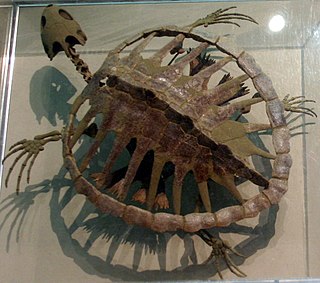 W
WThe Smoky Hill Chalk Member of the Niobrara Chalk formation is a Cretaceous conservation Lagerstätte, or fossil rich geological formation, known primarily for its exceptionally well-preserved marine reptiles. Named for the Smoky Hill River, the Smoky Hill Chalk Member is the uppermost of the two structural units of the Niobrara Chalk. It is underlain by the Fort Hays Limestone Member; and the Pierre Shale overlies the Smoky Hill Chalk. The Smoky Hill Chalk outcrops in parts of northwest Kansas, its most famous localities for fossils, and in southeastern Nebraska. Large well-known fossils excavated from the Smoky Hill Chalk include marine reptiles such as plesiosaurs, large bony fish such as Xiphactinus, mosasaurs, flying reptiles or pterosaurs, flightless marine birds such as Hesperornis, and turtles. Many of the most well-known specimens of the marine reptiles were collected by dinosaur hunter Charles H. Sternberg and his son George. The son collected a unique fossil of the giant bony fish Xiphactinus audax with the skeleton of another bony fish, Gillicus arcuatus inside the larger one. Another excellent skeleton of Xiphactinus audax was collected by Edward Drinker Cope during the late nineteenth century heyday of American paleontology and its Bone Wars.
 W
WThe St Bathans fauna is found in the lower Bannockburn Formation of the Manuherikia Group of Central Otago, in the South Island of New Zealand. It comprises a suite of fossilised prehistoric animals from the late Early Miocene (Altonian) period, with an age range of 19–16 million years ago.
 W
WTanis is the name given to a site of paleontological interest in southwestern North Dakota, United States. Tanis is part of the heavily studied Hell Creek Formation, a group of rocks spanning four states in North America renowned for many significant fossil discoveries from the Upper Cretaceous and lower Paleocene. Tanis is an extraordinary and unique site because it appears to record the events from the first minutes until a few hours after the impact of the giant Chicxulub asteroid in extreme detail. This impact, which struck the Gulf of Mexico about 66 million years ago, wiped out all non-avian dinosaurs and many other species. The extinction event caused by this impact paved the way for the domination of the Earth by mammals, including human beings.
 W
WThe Tiaojishan Formation is a geological formation in Hebei and Liaoning, People's Republic of China, dating to the middle-late Jurassic period. It is known for its exceptionally preserved fossils, including those of plants, insects and vertebrates. It is made up mainly of pyroclastic rock interspersed with basic volcanic and sedimentary rocks. Previously, the Tiaojishan Formation was grouped together with the underlying Haifanggou Formation as a single "Lanqi Formation." Most researchers now agree that the Daohugou Bed, of formerly controversial dating, is a part of the Tiaojishan formation. The Tiaojishan Formation forms a key part of the Yanliao Biota assemblage.
 W
WThe Torleite Formation is a geologic formation and Lagerstätte in Germany. It preserves fossils dating back to the Kimmeridgian stage of the Jurassic period. examples of animals that lived in the formation include the a small primitive megalosaurid theropod dinosaur known as Sciurumimus and the extinct bony fish Anaethalion.
 W
WUrumaco is a town in Falcón State in Venezuela. It is of interest to paleontologists due to its rich fossil history. The arid climate of the region means that the fossils are not hidden by vegetation. The fossils were first made known to science by geologists who came across them while looking for oil, which is abundant in some parts of Venezuela. The paleontological wealth of Urumaco makes it the most fossil-rich zone of northern South America.
 W
WThe Xiagou Formation is the middle strata of the Xinminbao Group. It is named for its type site in Xiagou, in the Changma Basin of Gansu Province, northwestern China and is considered Early Cretaceous in age. It is known outside the specialized world of Chinese geology as the site of a Lagerstätte in which the fossils were preserved of Gansus yumenensis, the earliest true modern bird.
 W
WThe Yixian Formation is a geological formation in Jinzhou, Liaoning, People's Republic of China, that spans 11 million years during the early Cretaceous period. It is known for its exquisitely preserved fossils, and is mainly composed of basalts interspersed with siliciclastic sediments.